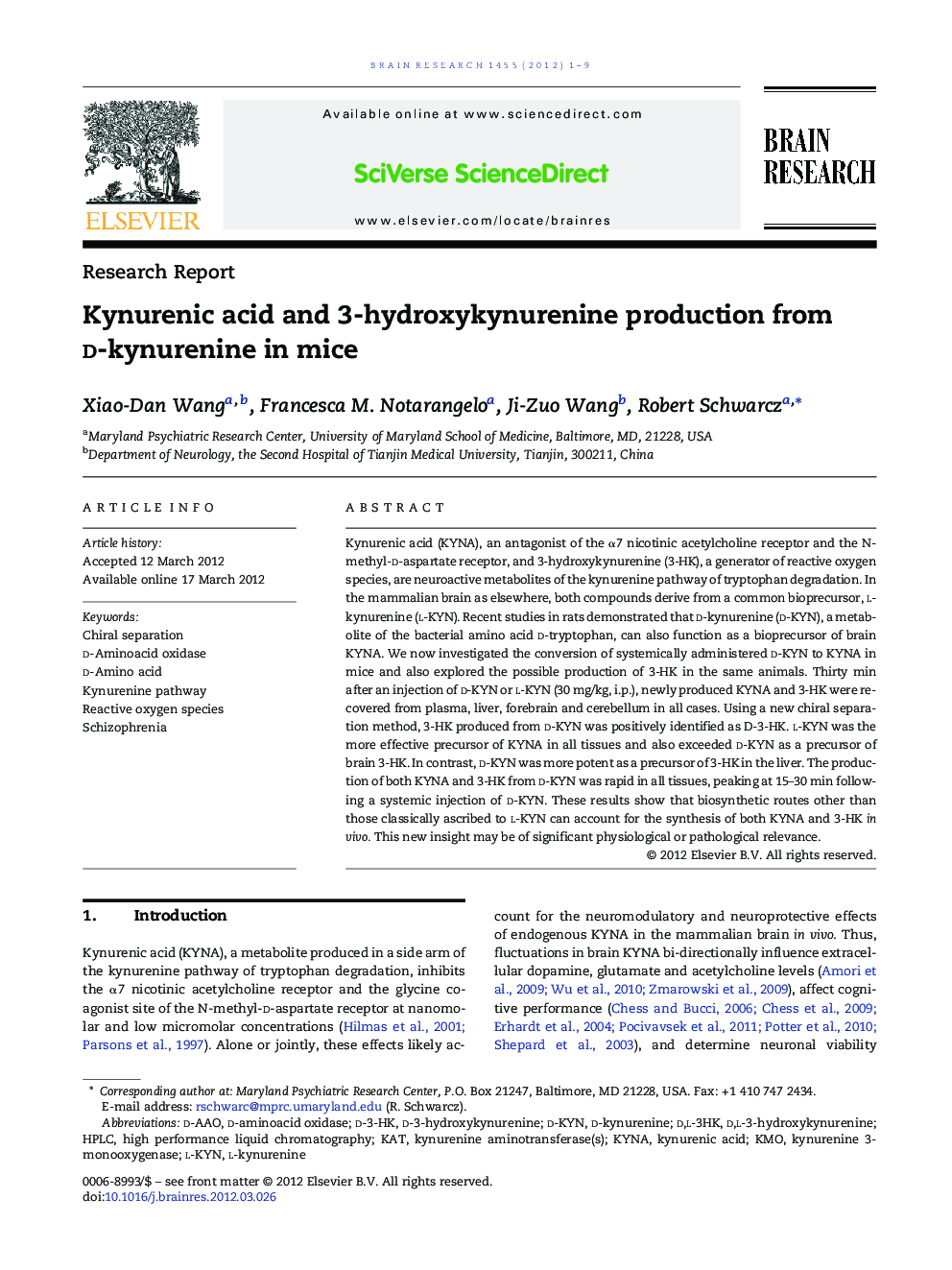| کد مقاله | کد نشریه | سال انتشار | مقاله انگلیسی | نسخه تمام متن |
|---|---|---|---|---|
| 4325238 | 1613984 | 2012 | 9 صفحه PDF | دانلود رایگان |

Kynurenic acid (KYNA), an antagonist of the α7 nicotinic acetylcholine receptor and the N-methyl-d-aspartate receptor, and 3-hydroxykynurenine (3-HK), a generator of reactive oxygen species, are neuroactive metabolites of the kynurenine pathway of tryptophan degradation. In the mammalian brain as elsewhere, both compounds derive from a common bioprecursor, l-kynurenine (l-KYN). Recent studies in rats demonstrated that d-kynurenine (d-KYN), a metabolite of the bacterial amino acid d-tryptophan, can also function as a bioprecursor of brain KYNA. We now investigated the conversion of systemically administered d-KYN to KYNA in mice and also explored the possible production of 3-HK in the same animals. Thirty min after an injection of d-KYN or l-KYN (30 mg/kg, i.p.), newly produced KYNA and 3-HK were recovered from plasma, liver, forebrain and cerebellum in all cases. Using a new chiral separation method, 3-HK produced from d-KYN was positively identified as D-3-HK. l-KYN was the more effective precursor of KYNA in all tissues and also exceeded d-KYN as a precursor of brain 3-HK. In contrast, d-KYN was more potent as a precursor of 3-HK in the liver. The production of both KYNA and 3-HK from d-KYN was rapid in all tissues, peaking at 15–30 min following a systemic injection of d-KYN. These results show that biosynthetic routes other than those classically ascribed to l-KYN can account for the synthesis of both KYNA and 3-HK in vivo. This new insight may be of significant physiological or pathological relevance.
► Kynurenic acid and 3-hydroxykynurenine are produced in brain and periphery following an i.p. injection of D-kynurenine.
► 3-Hydroxykynurenine generated from D-kynurenine is identified as the D-isomer.
► In most cases, kynurenic acid and 3-hydroxykynurenine synthesis from L-kynurenine exceeds formation from D-kynurenine.
► Routes not involving L-kynurenine can account for the synthesis of both kynurenic acid and 3-hydroxykynurenine in vivo.
Journal: Brain Research - Volume 1455, 21 May 2012, Pages 1–9